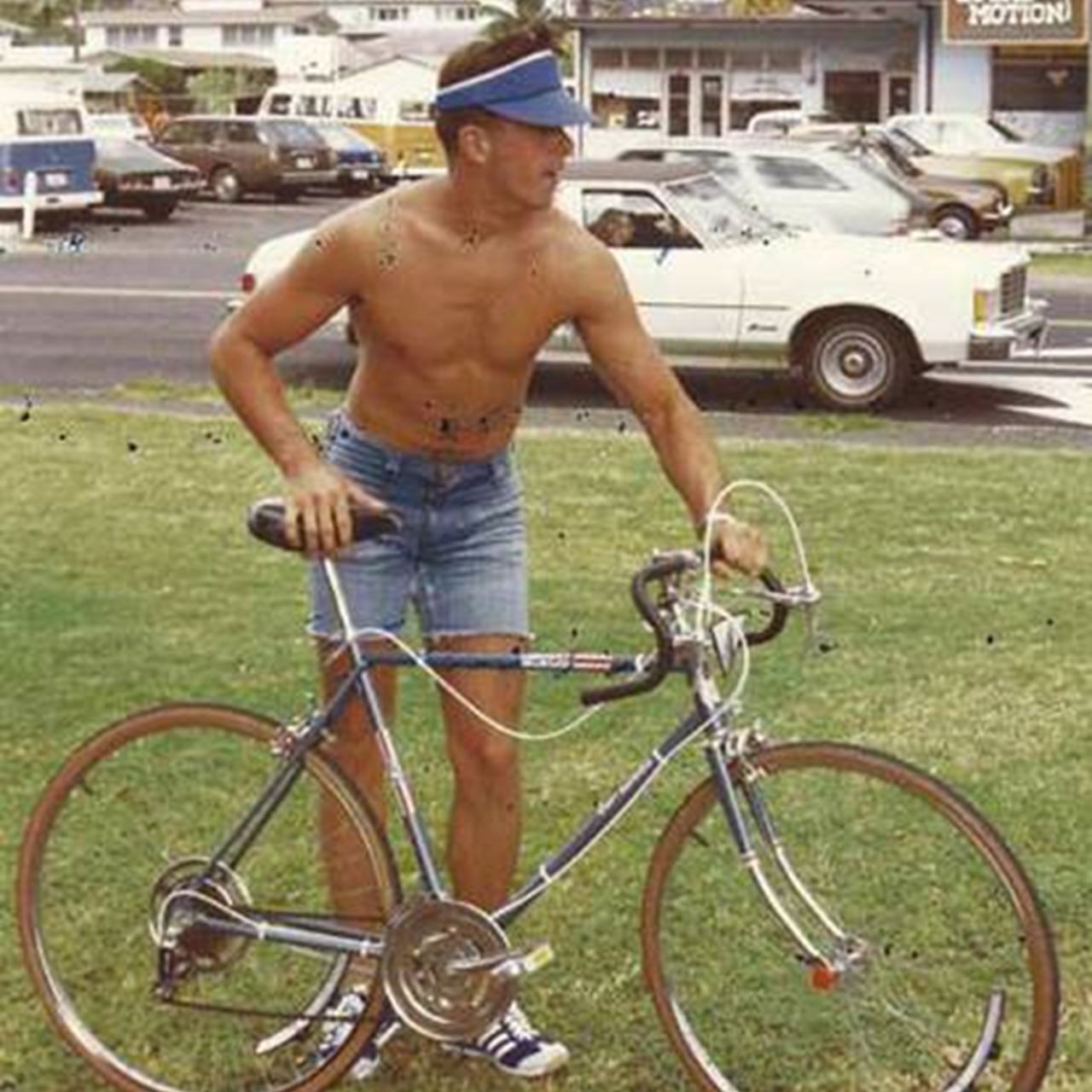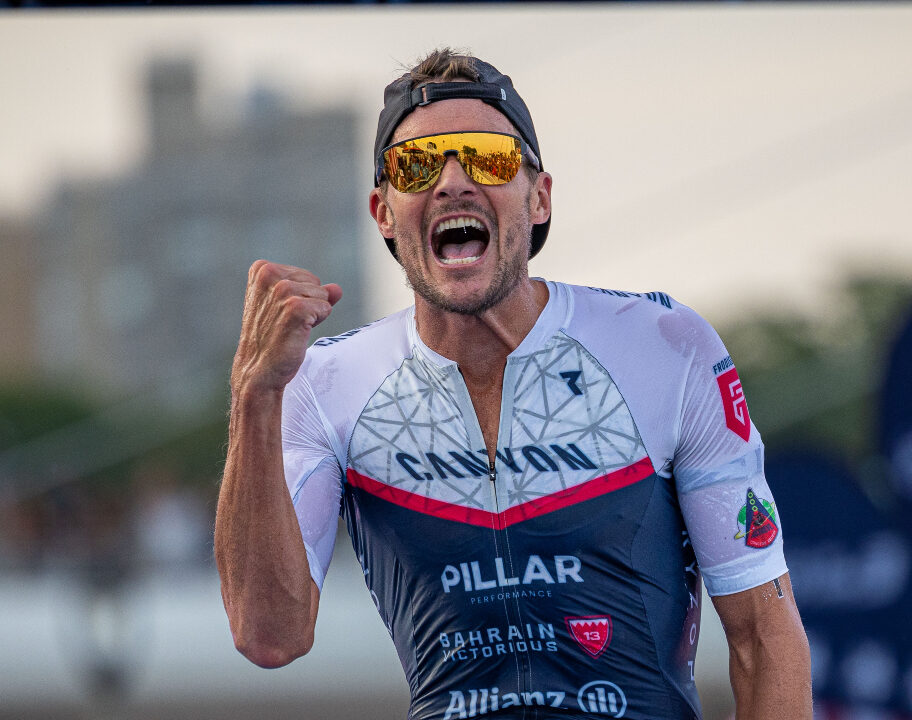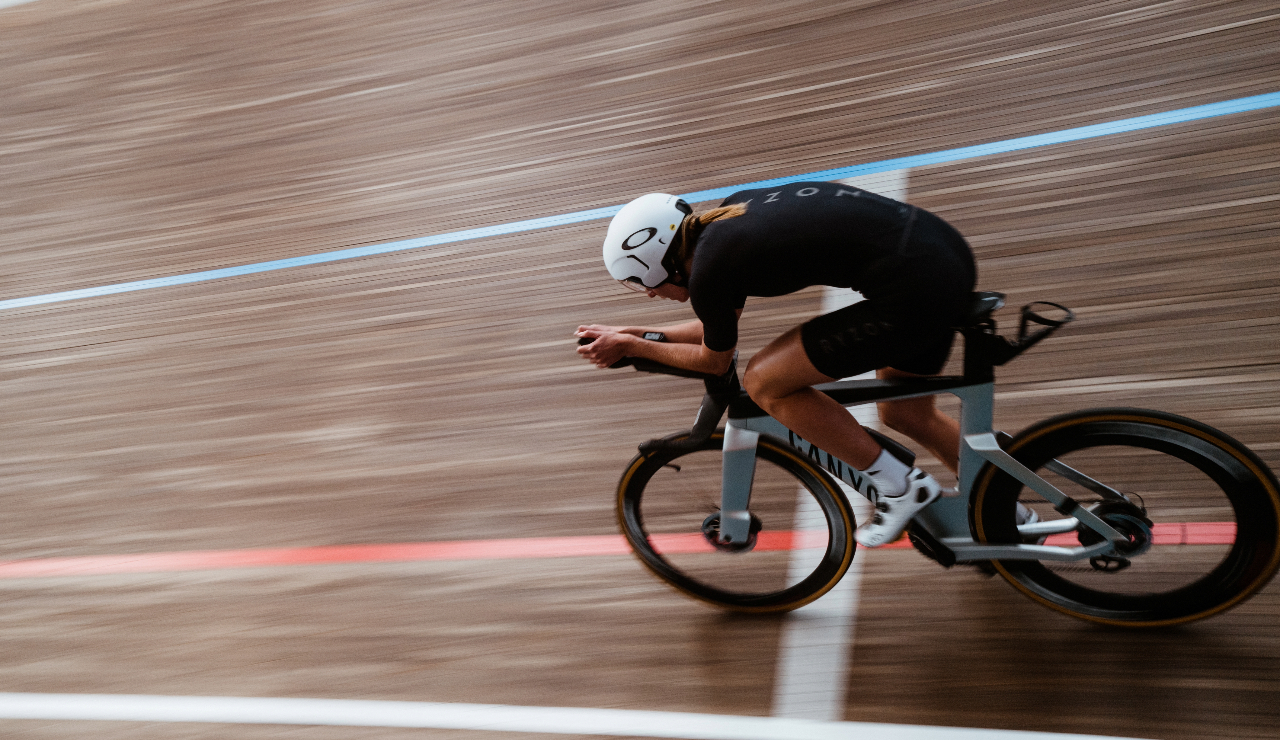As competition grows fiercer and finish times get quicker, dialling in on marginal gains through kit and equipment has seemingly become more important in the triathlon world than ever before.
When we look at the evolution of triathlon gear through the ages, we often turn to the bikes, the helmets and the running shoes. But what about the triathlon clothing itself? From denim cut-offs and Speedo briefs, to ultra-engineered tri suits loaded with watt-saving technology. Since the first swim-bike-run races in the 1970s, triathlon clothing has undergone a dramatic makeover through the decades, as both triathletes and brands strive to gain the competitive edge.
We look at how triathlon clothing has changed over the years, find out just how much the right tri suit can improve your performance and ponder the question: what will the triathlon clothing of the future look like? Will we come full circle and return to the minimalist Speedo and tank top ensembles of the early 80s which provide much amusement to the modern day triathlete? Or will we witness even more tri suit innovation that helps the already blisteringly fast paces out on the race course get even quicker?
Bare necessities: The OG triathlon clothing
In the early days, the triathlon clothing that athletes wore was very much about function rather than technical performance. Participating in the first ever Ironman race in 1978, the late Dave Orlowski famously set off on his bike wearing a pair of denim cut off shorts. “As for cycling shorts mine were real technical. The night before the event I took scissors and cut off a pair of blue jeans so I would have shorts with pockets to stick money in for stopping to get food or drink.” The carefully constructed chamois pads and dialled in nutrition plans we see today were a thing of the future, with Orlowski making use of the pockets on his make-shift denim shorts to whip out cash at gas stations and a McDonalds to fuel his 112 mile ride.
 Dave Orlowski famously completed the bike section of the inaugural IRONMAN in 1978 wearing denim shorts. We don’t even want to think about the chafing! © Dave Orlowski
Dave Orlowski famously completed the bike section of the inaugural IRONMAN in 1978 wearing denim shorts. We don’t even want to think about the chafing! © Dave Orlowski
An account of the second edition of the Ironman event in 1979, discovered in the archives of Sports Illustrated, describes the previous year’s silver medallist, John Dunbar, turning up in a Superman outfit made by the sister of one of his support crew. Meanwhile defending champion, Gordon Haller “huddled in a rain jacket”. Kit choices came down to what would best facilitate getting through the three triathlon disciplines, with less thought given to performance or sleek aesthetics.
Triathlon clothing in the 80s and 90s
As the sport of triathlon grew, the kit choices in the 80s and 90s became a touch more technical than the denim shorts or Superman outfits witnessed in the early days. The men would often compete in Speedos and cropped tank tops, or opt for cycling shorts. Meanwhile the women would race in one-piece swim suits. And while still a far cry from the balance of comfort and performance we see in tri suits today, these kit choices were at least starting to err on the side of aerodynamics.
 Mark Allen in action before the advent of trisuits. © Gary Newkirk / Getty Images
Mark Allen in action before the advent of trisuits. © Gary Newkirk / Getty Images
Many athletes would change into running shorts and singlets for the final leg of the race. The images of the famous Iron War between Dave Scott and Mark Allen in 1989 see the pair sporting kit we might be more accustomed to seeing runners wear in a standalone marathon or track meet.
The creation of the first tri suit
Recognising the inefficiency of getting changed between the three triathlon disciplines, Crystal Nylin created the first iteration of a tri suit in Hawaii in 1983. She sewed pads into shorts, so that athletes wouldn’t have to lose time changing outfits in transition.
Through the 90s and the 2000s, triathlon clothing more akin to what we see out on the race courses these days became more prevalent. Athletes typically raced in all-in-one sleeveless tri suits or opted for tight-fitting two piece triathlon outfits.
The next level: today’s tri suits have seriously upped the triathlon clothing game
Gone were the denim shorts and the baggy singlets of the 80s by the time the 90s and the early 2000s rolled around. Triathlon gear was becoming more technical, and more performance focused. But in the last decade, we have seen a real step change in just how technical triathlon clothing has become.

JAN Frodeno
RYZON Designer – 3x IM World & Olympic Champion
[Jan Quote”]
Athletes have raised the bar for triathlon performance, time after time. As the sport has grown, so has the importance of dialling in every single bit of kit to maximise gains – from bikes, to helmets, to tri suits. Triathletes are constantly searching for the kit that will give them the extra 1%. And brands are responding with product development and innovation that has taken triathlon clothing offerings to the next level.
 The RYZON triathlon suit being tested in a velodrome
The RYZON triathlon suit being tested in a velodrome
These days, tri suits aren’t manufactured – they’re engineered. Tri suits are subject to rigorous testing, in labs, wind tunnels and velodromes. Kit is created not just with comfort and convenience in mind, but with the aim of pushing the boundaries of athletic performance. We’ve seen an evolution. From the simplicity of running shorts and vests, to tri suits offering hydrodynamic coatings, watt-saving aerodynamic tuning and temperature regulating materials.
“Over the last decade, the product development process for triathlon clothing has evolved significantly to cater to the changing needs of athletes. One of the most notable advancements has been the integration of cutting-edge materials and technologies.
At Ryzon, we’ve strongly emphasised research and development to introduce these innovations into our product range. For instance, we’ve adopted aerodynamic fabrics to reduce drag in the water and on the bike – enhancing overall performance.
Together with our ambassadors and Jan Frodeno, we’ve not only tested our tri suits in the wind tunnel – but also conducted field tests to optimise the suits’ aerodynamic performance. Another critical change has been the emphasis on sustainability. Ryzon is committed to eco-friendly practices, and we’ve integrated sustainable materials into our product lines.”

Can the right tri suit improve your performance?
It goes without saying that any tri suit is going to offer quicker race times versus a full kit change in transition. So for a triathlon beginner, investing in a tri suit is worth it for the instant performance improvement.
But for more seasoned triathletes looking to get every drop of performance out of themselves come race day, just how much of a difference can your choice of tri suit make to your finish times? Clearly, the more aerodynamic your suit the faster you’ll be able to ride – particularly key for the flat race courses where aero is everything. Some tri suits claim to offer power savings of up to 12 watts, which over the longer distances could take valuable time off your bike split. For non-wetsuit swims, hydrodynamic materials found in many of the latest suits can help to reduce drag. And when it comes to the run, technology such as Coldblack® combined with the latest evolutions in quick-wicking materials can be a game-changer for staying cool and finishing strong.
“Tri suit technology is pivotal in enhancing swim speed. Hydrodynamic design features such as textured or coated fabrics minimise water resistance and drag, allowing swimmers to move effortlessly through the water – ultimately conserving energy and enhancing swim speed. Flexibility and comfort are also key. At Ryzon, our tri suits strike the balance between flexibility and support, giving athletes full range of motion with reduced resistance.”
“The aerodynamic design of a tri suit helps to reduce drag, which is a major factor affecting a cyclist’s speed. By minimising frontal area and smoothing airflow over the body, a tri suit reduces the resistance riders face. Close-fitting designs and fabrics with texture or dimpling help to enhance streamlining, which minimises turbulence and allows cyclists to cut through the air more smoothly. With less energy wasted overcoming air resistance, triathletes can achieve higher speeds for less effort, conserving energy for the run.”
“Cooling and thermoregulating technologies integrated into tri suits, such as specific fabrics or designs that enhance ventilation, help to dissipate excess heat. This is particularly beneficial during the run leg where temperature fluctuations can occur. If the body becomes overheated, this heat stress can have a significant impact on performance. The use of cooling and thermoregulating technologies helps athletes to maintain a comfortable body temperature, so they can sustain their performance throughout the run leg of a triathlon resulting in faster run splits and improved overall race results.”

What might triathlon clothing look like in the future?
The triathlon landscape is only going to get more competitive, as athletes continue to test the limits of what’s possible. Brands are continuously researching and developing ways to make their kit the fastest on the market – but you have to wonder how far this innovation can go. Will the tri suits we see out on the race courses in 10 years’ time look drastically different to the suits of today? Or will kit regulations come into place that will see triathletes return to the bare necessities Speedos and tank tops of triathlon history?
Research into aerodynamic performance has already seen some brands move away from the striped aero sleeve fabric on their tri suits, in favour of dimpled material based on golf ball technology. And with more athletes opting to store a hydration system in the front of their suit on the bike to further enhance their aero gains, we might even see tri suits being redeveloped to offer a ‘built-in’ solution.
Without a crystal ball, perhaps only time will tell. But we picked Markus’ brain all the same to get his thoughts on what the next evolution of triathlon clothing could look like:
Smart fabric integration and biometric monitoring: Smart fabrics and sensors could be integrated into triathlon clothing, providing real-time data on factors such as heart rate, temperature and hydration levels to help athletes make informed decisions during their races. Biometric and biomechanical factors could also be monitored, with the feedback helping to prevent injuries or optimise their race strategy.
Improved aerodynamics: Aerodynamic innovation will persist, with advancements in fabric design, seam placement and textile technology. Triathlon clothing will become even more streamlined, reducing drag and enhancing speed.
Innovative materials: Triathlon clothing will continue to benefit from the development of new and advanced materials. Lightweight, breathable, and highly durable fabrics will be increasingly used to enhance comfort and mobility during the swim, bike, and run stages.

>>> Read full article>>>
Copyright for syndicated content belongs to the linked Source : Tri247 – https://www.tri247.com/triathlon-gear/triathlon-clothing-tri-suit-performance-improvements?utm_source=rss&utm_medium=rss&utm_campaign=triathlon-clothing-tri-suit-performance-improvements














![[News] Japan Develops 10nm Nanoimprint Technology, with Potential to Tackle EUV Bottleneck – TrendForce](https://earth-news.info/wp-content/uploads/2025/12/329851-news-japan-develops-10nm-nanoimprint-technology-with-potential-to-tackle-euv-bottleneck-trendforce-360x180.jpg)
















